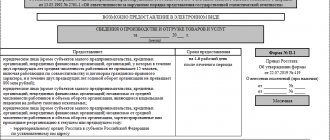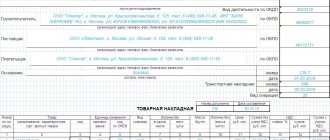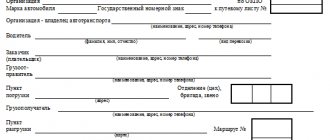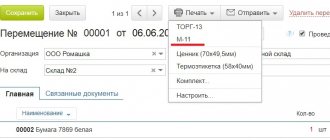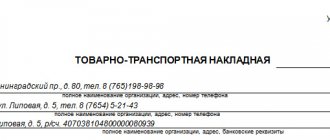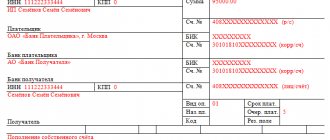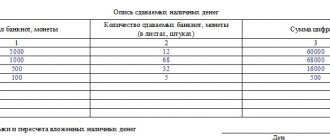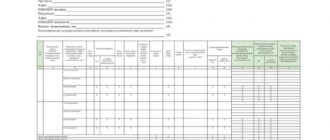New form of consignment note for cargo transportation
Get the form for free!
Register in the online document printing service MoySklad, where you can: completely free of charge:
- waybill
- Fill out and print the document online (this is very convenient)
The number of sections in the new waybill has been reduced from 17 to 12. But, at the same time, the volume of information that needs to be included in the invoice has become larger.
The section of the bill of lading on the cost of transporting goods included details for the primary document: positions, the basis of authority of the representatives of the shipper and the carrier, the date of signing the document.
Information about the weight of the cargo (except for the sealed one) is now entered into the document not only based on the weighing results, but also on the basis of calculations based on the volume and technical documentation of the cargo.
The form was supplemented with the section “Cost of cargo transportation (established fee) in rubles (if necessary).” This section must be completed if the waybill is used as a primary document.
There you need to indicate:
- cost of transportation services without tax,
- tax rate,
- the amount of tax charged to the buyer,
- cost of transportation services including tax.
Section 12 also contains the signatures of officials responsible for documenting the facts of economic life on the part of the carrier and the shipper.
How to fill out the carrier
When loading, the carrier’s driver puts his signature in Section 8 “Reception of Cargo”, and when unloading - in Section 10 “Issuing Cargo”. The carrier fills out sections 6–12 of the bill of lading.
Section 6 "Carrier" . If this section is not completed by the shipper, it will be completed by the shipper. Provide information about yourself and the driver’s details: Full name, Taxpayer Identification Number, driver’s license, phone number.
Section 7 "Vehicle" . The carrier provides information about the vehicle on which the cargo will be transported: type, make, carrying capacity, capacity, registration number. Additionally, you need to select the type of ownership: property, joint property of spouses, leasing, rent or free use.
If the transport does not meet the shipper’s requirements stated in section 5, then he may refuse loading (clause 31 of the Rules, approved by Government Decree No. 2200 dated December 21, 2020).
Section 8 “Reception of cargo” . This section is filled out by the shipper, and the carrier’s driver signs and indicates his full name. From this moment on, the cargo is considered entrusted to the carrier.
If necessary, the driver can indicate in a special line his comments about the condition of the cargo, containers, packaging, dates of arrival and departure.
Section 9 “Redirection” if he has received instructions to redirect the cargo from an authorized person (section 5 of the consignment note).
Section 10 “Issuance of cargo” . As in section 8, the driver puts his signature with a transcript, and can also leave comments on unloading. Other information is usually filled out by the consignee.
Section 12 “Cost of cargo transportation” . In this section, the carrier specifies the cost of transportation services excluding VAT, the tax rate, the amount of tax charged to the buyer, and the total cost of transportation services. He also indicates his details and the details of the contract of carriage.
Important!
The waybill confirms the costs of transportation if it contains all the necessary details and section 12 is filled out correctly. If there is no section 12, another primary document must be attached to the waybill, which determines the price of transportation. For example, a universal transfer document.
Electronic waybill
From January 1, 2022, electronic waybills have the same status as a document issued on paper.
The consignment note, issued in electronic form, is also intended to confirm the conclusion of the transportation contract. Its form is given in Appendix No. 4 to Government Decree No. 2116 dated November 30, 2021, but the format of the electronic consignment note must be developed by the Federal Tax Service.
To sign an electronic waybill, the driver can use a simple electronic signature or an enhanced unqualified electronic signature. But with the latter option, the document must additionally be signed with an enhanced qualified electronic signature of the carrier.
The electronic waybill must be sent to the state information system “Electronic transportation documents”. The procedure for sending an electronic consignment note to this system will be developed and approved by the government.
If a company is connected to the system and has switched to electronic document management, the accounting department does not need to print out invoices and store them on paper.
Rules for registration and procedure for working with the form
This document refers to primary documentation, so when filling it out, you should adhere to certain standards. In particular, you must not leave cells empty (where dashes should be placed), allow inaccuracies and errors, or enter incorrect information into the form.
Additional documents may be attached to Form 1-T:
- certificates,
- passports,
- certificates,
- contracts, etc.
All of them must be indicated in the “Attachment” line of the delivery note.
The document is printed in four copies , one of which remains with the sender of the goods, the other three are handed over to the driver who will deliver the goods.
All documents must be certified with the required signatures. Then the driver must hand over the second copy to the consignee, and the third and fourth copies must be handed over to the management of the transport company (they must have the signatures of both the sender and the recipient of the goods). After this, the third copy with the issued invoice for payment for transportation services is sent to the customer (i.e., the company that entered into an agreement for the delivery of the goods), and the fourth remains with the carrier and becomes part of its accounting records.
How is TTN different from TN?
Before the introduction of the consignment note (BW), another document was used: the consignment note (BWB). However, after the first one came into practice, the second one was not cancelled. Now both documents are used: both TN and TTN. What is the difference between them?
Waybill (Bill of Lading):
- Serves to record the movement of goods between the seller and the buyer.
- Confirms the legality of transportation when checked on the road.
- Includes two sections: commodity and transport. They indicate information about the cargo and the stages of its transportation.
- Serves as the basis for (a) payments for cargo transportation by road, (b) write-off of goods by the sender and their receipt by the recipient.
- Filled out in four copies. More details about the rules for issuing TTN, form and sample - here >>
Waybill (TN):
- Confirms the conclusion of a cargo transportation contract.
- Confirms the legality of transportation.
- Includes only the transport section. It contains information about the carrier, shipper, recipient, transportation conditions, as well as data confirming the fact of cargo transportation and the costs of it.
- Includes information about the containers used for cargo transportation, the packaging method, labeling, and cargo items: their weight, volume, dimensions. TTN does not have this information.
- Includes instructions from the shipper about the required parameters of the vehicle, data on transportation conditions, the actual condition of the cargo, seals, containers and packaging, reservations and comments from the carrier. This information is not indicated in the TTN.
- Does not include telephone numbers of legal entities (senders, recipients, carriers), but contains numbers of persons responsible for transportation.
- Does not require signatures of officials who authorized the release of cargo and persons who released the cargo. Also, the signature of an accountant, chief or senior is not required. The TTN must contain all these signatures - in the product section.
- It does not include information about the payer - name, address, bank details - unlike the TTN.
- Serves as the basis for payments for the transportation of goods by road.
- Confirms the costs of road transportation.
- It cannot serve as a basis for the receipt of inventory items by the buyer and for their write-off by the supplier. The TN does not contain a section with the necessary information: the price per unit of goods and the total cost of all transported goods are not given. You can only indicate the declared value of the cargo. Then, in the event of a shortage or damage to the goods due to the fault of the carrier, it will be possible to calculate the amount of compensation.
- Filled out in triplicate. Instructions for issuing a consignment note, an example of filling out and a blank form for 2021 are below.
If you are issuing a technical document, in order to write off and capitalize inventory items, you also need to issue a TORG-12 consignment note. It contains the necessary information about the product: price per unit, quantity and name.
Get the document for free!
Register in the online document printing service MoySklad, where you can: completely free of charge:
- Download the list of goods that can be sold during quarantine and other regulations on business operations
- Download the full list of industries affected by coronavirus and a table with new tax payment deadlines
- Filling out and printing documents online is very convenient
All sections of the bill of lading from March 2022
Section 1 “Consignor”
The shipper is the person loading the cargo into the vehicle;
This section, as its name suggests, is filled out by the shipper under the contract of carriage. The data entered in the invoice must comply with the contract. Therefore, it is better to simply copy them from the contract.
If, in addition to the contract for the carriage of goods, there is also an agreement for the provision of services for organizing the transportation of goods, that is, there is a forwarder, in section 1 “Consignor” you must indicate:
- the person who provides the services for organizing the transportation of goods and takes possession of the goods for transportation is marked o;
- a person who is the customer of services for organizing the transportation of cargo, if there is no transfer of the cargo into the possession of the service provider, even if the forwarder himself is engaged in loading.
Section 1a “Customer of services for organizing cargo transportation (if available)”
Section 1a must be completed if there are contracts for the provision of services for organizing the transportation of goods.
And in section 1a you need to indicate the details of the contract and the Customer’s data: TIN, name, address, telephone. If the Customer is an individual entrepreneur, instead of the name, the surname, first name, and patronymic are indicated.
Section 2 “Consignee”
The section is filled out accordingly by the recipient of the goods. Traditional details: TIN, name, address, telephone. If the Consignee is an individual entrepreneur, instead of the name, the surname, first name, and patronymic are indicated.
Section 3 "Cargo"
The section contains several lines in which the following information is entered:
- Shipping Name;
- number of packages, labeling, type of container and packaging method;
- details of the document for shipment of goods: name, number, date;
- gross weight of cargo in kilograms, net weight of cargo;
- declared value (value) of the cargo.
If dangerous goods are transported, additional information about its condition, transportation requirements, ensuring integrity, etc. is indicated.
There may be no declared value if the parties to the contract do not consider it necessary to agree on the price of the cargo in case of loss or theft. But, if the cost is indicated, it should not exceed the actual cost of the cargo.
If the cargo is transported in a container, in section 3 in the name of the cargo write “Container” and its identification number. If there are several containers, you need to indicate their number, and be sure to note in the accompanying statement:
- characteristics and names of the cargo (if the container is full);
- lack of cargo (if the container is empty).
Section 4 “Accompanying documents for cargo (if available)”
The section contains several lines for entering information about accompanying documents. These are various kinds of certificates, passports, certificates, permits and invoices.
The invoice includes:
- list of documents attached to the waybill,
- list of certificates, quality certificates, certificates, etc. attached to the cargo.
- details of documents, details of the accompanying sheet, if transported in containers.
The details of each document must include:
- Name,
- numbers,
- date,
- compiler's TIN,
- Full name – for foreigners.
Download the form of the Consignment Note, valid from March 1, 2022
Section 5 “Consignor’s instructions on special conditions of transportation”
Section 5 is completed by the Shipper if there is:
- special conditions of transportation that differ from standard ones;
- conditions containing strict requirements or conditions requiring special treatment of the cargo.
For example, special temperature conditions, vehicle speed restrictions, the danger of cargo overturning, etc.
So, in section 5 there are lines in which they write:
- transportation route, date and time/timing of cargo delivery;
- the need to comply with phytosanitary, sanitary, quarantine, customs and other requirements;
- temperature conditions for cargo transportation;
- information about locking and sealing devices;
- overload ban;
- speed limit;
- information about authorized persons who have the right to give instructions about forwarding, and their contacts.
Section 6 "Carrier"
This section indicates the details of the organization that, under the contract of carriage, ensures the delivery and transfer of cargo. Information about the carrier is traditional: name, tax identification number, address.
In the same section, indicate the driver’s data:
- FULL NAME;
- TIN;
- series, number, date of issue of the driver's license.
If the driver is replaced, new data must be entered in the same section.
Section 7 "Vehicle"
In this section you need to indicate all the details of the vehicle on which the cargo is transported:
- type,
- brand,
- lifting capacity (in tons),
- capacity (in cubic meters),
- vehicle registration number.
This section also indicates on what basis the carrier uses the vehicle.
Unlike the previous form of invoice, two more possible types of car ownership have been added - free use and joint ownership of spouses.
You need to select one of the proposed types of ownership and enter a certain number:
1 - property;
2 - joint property of spouses;
3 - rent;
4 — leasing;
5 - free use.
It is not difficult to select the desired type of ownership from the proposed options. Only type “5”—free use—raises questions. It must be selected if the carrier uses transport by proxy or under a contract.
If the vehicle has to be replaced during transportation, new information about the vehicle must be provided in this section.
Section 8 “Reception of cargo”
This section indicates the details of the company or individual entrepreneur from whom the Carrier accepts the cargo.
Standard data:
- name of the company that owns the loading point (warehouse),
- INN of the organization (only in the electronic consignment note) or full name of the individual entrepreneur - owner of the loading point,
- loading location address.
Next, the planned and actual data on the arrival and departure of the vehicle are indicated.
Then, cargo data:
- gross weight of the cargo in kilograms,
- number of cargo pieces,
- container, packaging.
This section is certified by two or three signatures:
- responsible for issuing the pile,
- driver,
- representative of the shipper (his signature may not be present)
Section 9 “Forwarding (if available)”
This section is filled out by the carrier if he has instructions from the shipper to redirect the cargo. The carrier must indicate:
- address of the new cargo unloading point;
- date and time of unloading after redirection;
- details of the document (date and number) on the basis of which the delivery plan has been changed.
If the Shipper instructs to change the recipient of the cargo, his details (name, address, tax identification number) must be indicated in this section.
Section 10 “Cargo Delivery”
This section records all information about the delivery of cargo: time, place, date, number of packages, weight, etc.
This section is filled out by the Consignee in the presence of the carrier/driver.
The maximum amount of data is indicated, including the condition of the container, seals, markings, etc.
If the carrier has comments on the condition of the cargo itself, packaging, markings, containers, etc., they can be noted in this section.
The section is endorsed with signatures:
- consignee or a person authorized by the consignor);
- the driver who handed over the cargo to the consignee or a person authorized by the consignee).
Section 11 “Marks of shippers, consignees, carriers (if necessary)”
Here you need to indicate information about the acts that could be drawn up during the process of preparing the invoice. For example, the cargo was weighed, a report on the condition of the container was drawn up, a report on reloading was drawn up, etc.
Previously, the Transportation Rules did not provide for the execution of a weighing report. It has now been determined that the act is drawn up after determining the total mass of the loaded vehicle and the load on its axles and is attached to the waybill. The act is drawn up at the request of one of the parties to the transportation.
When accepting a loaded container or removable body for transportation, a weighing report is mandatory.
Section 12 “Cost of cargo transportation (established fee) in rubles (if necessary)”
The section must be filled out carefully and in detail if the waybill will be used by the accounting department as a primary document confirming expenses in accordance with Article 9 of Federal Law No. 402-FZ “On Accounting”.
In Section 12 “Cost of cargo transportation (established fee) in rubles (if necessary)” of the waybill you must enter:
- cost of transportation services excluding VAT,
- tax rate,
- the amount of VAT charged to the buyer;
- cost of transportation services including VAT.
The section is signed by those responsible for documenting the facts of economic life on the part of the carrier and the shipper.
Clarifications of how much the carrier's expenses for traveling on toll roads, paying customs duties and fees, performing loading and unloading operations, disinfection, transporting dangerous goods, etc., are not provided for in the new form of the consignment note. All these clarifications were in the same form.
Rules for filling out the waybill 2022
In 2022, the bill of lading form is filled out in accordance with the updated Rules for the carriage of goods:
- The shipper must fill out paragraphs 1-6 and 16 in the document (“Consignor”, “Consignee”, “Name of the cargo”, “Accompanying documents for the cargo”, “Instructions of the shipper”, “Acceptance of the cargo”, “Date of compilation, signatures of the parties”) .
- The carrier must determine (in agreement with the sender) the conditions of transportation. He fills out (in his part) paragraphs 8-11, 13, 15, 16 of the TN (“Conditions of transportation”, “Information on acceptance of the order for execution”, “Carrier”, “Vehicle”, “Other conditions”, “Cost of services” carrier and the procedure for calculating freight charges”, “Date of preparation, signatures of the parties”).
- The driver signs the waybill in paragraphs 6 and 7 (“Acceptance of cargo”, “Deliverance of cargo”), fills out paragraph 15 (“Cost of carrier services and the procedure for calculating the freight charge” - the amount of the freight charge is indicated here), if necessary - paragraph 12 (“ Reservations and comments of the carrier" - here are comments about the actual condition of the cargo, containers, packaging, marking, sealing - when delivering the cargo, changes in transportation conditions - when unloading). On the way, the driver, as necessary, has the right to make notes about changes in transportation conditions (clause 12) and redirection (clause 14 “Readdressing”).
- The consignee fills out clause 7 (“Deliverance of cargo”) in the waybill.
- Paragraph 5 (“Consignor’s instructions”) provides the value of the cargo declared by the consignor. It should not be more than its actual value.
- The absence of an entry in the cargo transportation invoice form is confirmed by a dash. There should be no empty fields in the document.
- If there are no entries in paragraph 8, the general conditions under the Rules for the Transportation of Goods and the Federal Law “Charter of Motor Transport and Urban Ground Electric Transport” apply.
- The consignment note is drawn up in three copies: for the shipper, the consignee and the carrier. All copies are originals.
- The consignment note is signed by the shipper and the carrier or their authorized representatives. Corrections are certified by the same signatures.
- The form of the consignment note for the transportation of goods includes information about all consignments of cargo transported in one transport.
- If several cars are involved, the number of copies of the waybill must correspond to their number: for each car - three TN.
When transporting dangerous goods or when using large or heavy vehicles, in paragraph 13, if necessary, information about the route, as well as the number, date and validity period of the special permit is indicated.
How to fill out the shipper
The shipper can be the seller, buyer or forwarder. For example, if a buyer hires a carrier to pick up goods from the seller's warehouse, the buyer will be both the shipper and the consignee.
The shipper fills out the header of the waybill: date, document number, copy number (the document is drawn up in three or four pieces, each copy has its own number), date and application number. Additionally, he fills out sections 1–5, 8, 11 and 12. If necessary, section 6 “Carrier” is completed.
Section 1 "Consignor" . Indicate the full name of the individual or the name of the organization, TIN, address, telephone number. If there is a transport expedition agreement, the following is indicated as the shipper:
- The forwarder, if he has taken possession of the cargo. At the same time the o.
- The customer of transportation services (cargo owner), if the forwarder did not take possession of the cargo, including if the customer of the transportation himself loaded the goods.
If the shipper is a forwarder, then Section 1a is completed.
Section 2 “Consignee” . Fill in the same way as the first section, but with the data of the recipient of the goods. Additionally, please indicate your delivery address.
Section 3 "Cargo" . It is filled out by the person who loaded the cargo into the transport. This section is quite voluminous, it includes data on the transported cargo in five points: shipping name, number of packages, markings, containers and packaging, weight and dimensions, list of hazardous substances - fill in for the transportation of dangerous goods. If there is no data to fill out, you can put a dash.
Declared value is now allowed not to be specified. If necessary, it can be taken from the delivery note or UPD. It must not exceed the actual value of the cargo. In some cases it cannot be indicated (clause 78 of the Rules for the carriage of goods by road).
Kontur.Market will recognize the goods in a scan of the invoice and compare them with your catalog
Try it
Section 4 “Accompanying documents for cargo” (if available) . In this section you need to provide the details of the documents attached to the invoice. This includes certificates, passports, cargo certificates, shipping documents, accompanying statements, documents provided for by ADR, sanitary, customs, quarantine regulations, etc. If they are available, the tax office will have fewer reasons to doubt the transaction. This section may not be filled out.
Section 5 "Consignor's instructions on special conditions of transportation" . In this section, you need to specify the instructions that the transport company must follow during the transportation of cargo: temperature conditions, data on seals, sanitary and quarantine requirements, etc. The section should indicate the contacts of persons upon whose instructions redirection can occur.
If necessary, indicate the transportation route, date and time of cargo delivery.
Section 8 “Reception of cargo” . Enter the details of the person performing the loading, the name (TIN) of the owner of the loading point, and the address of the loading place. When loading, the actual date and time of arrival and departure of the vehicle are indicated, the condition of the cargo, its weight, and the number of occupied places are described. The section must be certified by the signatures of the person from whom the cargo is taken, the driver and the shipper (if necessary).
Section 11 “Marks of shippers, consignees, carriers.” If you drew up reports of violations or claims against the carrier or consignee, enter information about them. Cases when an act is needed are listed in clause 81 of the Rules.
Section 12 “Cost of cargo transportation.” Fill in if you plan to use the waybill as a primary accounting document. The shipper indicates information about the official who signs the invoice, puts his signature, and writes down the details of the transportation agreement.
freight bill of lading
Do you want to forget about the problems with issuing a new waybill once and for all? The MoySklad online service has developed a system specifically for you to automatically fill out and print all the necessary accounting documents. To work with it, you only need a computer with a printer and Internet access. And you will be able to draw up and print documents at any time of the day and from anywhere, wherever you are.
More than 1,500,000 companies already print invoices, invoices and other documents in the MyWarehouse service Start using
When is a waybill used?
A bill of lading is drawn up when the shipper hands over the cargo to the carrier for delivery to the consignee. That is, the carrier provides a vehicle into which the cargo is loaded, takes it to the consignee, where the vehicle is unloaded. In this case, a contract for the carriage of goods is concluded.
A work order is drawn up if a representative of the cargo owner is present during the transportation of cargo. In this case, a charter agreement is concluded.
How to create a work order?
An accompanying statement is drawn up if the cargo is transported in a container. That is, a container with cargo is installed on the vehicle, and at the unloading point the container is removed from the vehicle.
How to prepare a cover sheet?
In this article we will talk only about the first document, that is, the waybill.
Consignment note: who should issue it?
In general, the shipper, unless otherwise provided by the contract of carriage. But this can be inconvenient, since the sender, having filled out his part of the document, will have to hand over the original to the driver along with the cargo. He, instead of transporting the goods directly to the recipient, will first have to go to the office of the carrier company with a bill of lading so that the responsible persons fill it out. And only after this the driver will deliver the goods. It is more convenient to stipulate in the contract that the freight forwarder will issue the waybill. Then the transport company fills out its part of the form in its office, the original is given to the driver, and he takes it to the shipper, leaving for the cargo.
Document structure
The invoice can be roughly divided into two parts.
- First - commodity, - includes information
- about the sender and recipient of the goods,
volume,
- name, etc. options.
- Second part - transport. It contains information
- directly about transportation,
information about the carrier company and the specific driver,
- car make,
- travel time and mileage,
- product, etc.
This part of the document is the basis for the decommissioning of cargo from the sender's warehouse and at the same time for its receipt by the recipient.
The cost of transportation is also indicated here.
TN or TTN: which document to issue?
Now the TN and TTN forms are in effect simultaneously. What is the difference - read above. In short: the TTN contains information about the product necessary for write-off and capitalization, which eliminates the need to issue the TORG-12 form. However, the TN contains more detailed information about cargo transportation. Which document to issue depends on the specific situation:
- To justify the costs of transporting goods when a third party is involved: TTN or TN. Any of these forms confirms the fact of expenses incurred for road transportation.
- To confirm the legality of cargo transportation: TTN or TN. Any shape will do.
- To write off and record goods: TTN (or TN + TORG-12).
- When the supplier himself delivers to the buyer: TN.
- When the buyer himself picks up the goods from the supplier’s warehouse: neither a specification form nor a specification form is needed. If delivery is not included in the contract, then a consignment note in form No. TORG-12 is sufficient for capitalization, and a waybill can be used to justify the costs of fuel and lubricants and calculate the driver’s salary.
- When transporting any alcohol and alcohol-containing products: both TN and TTN. Only TTN can serve as an accompanying document for alcoholic products, confirming the legality of its production and circulation. TTN (consignment note): and sample filling for 2022 >>
New invoice form, which came into force in March 2022
The waybill is issued on the basis of the contract of carriage. The parties to the contract of carriage are: the shipper – the customer of the carriage and the carrier. At the same time, the contract of carriage provides for one more party - the consignee.
The waybill contains fields for entering details of all three parties:
- shipper - in section 1;
- consignee - in section 2;
- carrier - in section 10.
Who prepares and signs the invoice?
The consignment note is filled out sequentially by all participants in the transportation.
First, the Shipper fills out his part - this is the main part of the waybill, where most of the information is recorded. Then the Carrier enters his data into it. And, the last person to enter his data in his part of the consignment note is the Recipient of the cargo.
According to the new rules, information about signatories is detailed. Now you need to indicate exactly who signs the waybill from each party: from the shipper - the person who carried out the loading, from the carrier - the driver, from the consignee - any person authorized by him.
The invoice is signed by representatives of three parties:
- Shipper;
- Consignee;
- The carrier (this could be the driver).
The driver can be a representative of only one party. He does not have the right to sign a document for all participants in the transportation.
A consignment note is drawn up for the vehicle. If several consignments of cargo are sent in one vehicle, you can draw up one invoice, which indicates the entire list of cargo. But, if a large batch is divided into several vehicles, you need to draw up as many invoices as there are vehicles loaded.
Signatures on the invoice
The invoice is signed:
- In the paper version, with a “living” signature.
- In the electronic version with an enhanced qualified electronic signature (UKES).
- The driver can use a simple electronic signature or an enhanced unqualified electronic signature. But only if the carrier subsequently signs the invoice with his UKEP.
Printing is not required.
Download the form of the Consignment Note, valid from March 1, 2022
Number of copies of the invoice
It is necessary to create so many copies of the waybill so that each participant in the transaction has their own copy. That is, at least 3 (three) originals, for:
- shipper,
- consignee,
- carrier.
You can make four or five copies if other parties to the transaction need their own copies or the parties would like to have 2 original copies.
Previously on the topic:
From 2022 – new waybills: paper and electronic
When a waybill is not needed
If the buyer picks up the goods by self-pickup in his own car, a transport bill of lading may not be issued, since no one provides delivery services.
In this case, waybills, salary slips and other documents are used to confirm transportation and loading and unloading expenses, as well as expenses for fuels and lubricants.
There is another case when a delivery note is not needed - if the delivery cost is included in the price of the goods. In this case, it will be replaced by a delivery note. The transportation customer can accept goods for registration using a consignment note in the TORG-12 form.
Important details:
Do I need a waybill to deduct VAT?
Transportation costs: it is better not to neglect the delivery note!
How to justify VAT deduction for transportation?
Requirements for filling
The basic rules for filling out are given in Appendix No. 4 to RF PP No. 2200:
- TN is a document confirming the conclusion of a transportation agreement (clause 7 of rules No. 2200).
- Unless otherwise provided by the contract of carriage, the invoice is drawn up for one or more consignments of goods transported on one vehicle.
- 3 copies (originals) of the consignment note are drawn up - for the shipper, consignee and carrier, they are signed by the shipper and carrier or their authorized persons (clause 10 of rules No. 2200).
- Transportation documentation, unless otherwise provided by the contract, is drawn up by the shipper. The sender can be both the supplier of goods and their buyer, or persons authorized by the seller and buyer, as well as a forwarder.
- If corrections are made to a document, they are certified by the signatures of the persons who compiled the corrected document, indicating their last names and initials or other details (clause 11 of rules No. 2200).
- In the case of loading cargo to be transported onto various vehicles, a number of invoices should be drawn up that corresponds to the number of vehicles used.
Persons who sign the document are authorized by valid powers of attorney or official duties.
Didn't find the answer in our instructions? Use a free ready-made solution for working with a waybill from ConsultantPlus experts.
Rules for filling out the TTN
So, form 1-T is divided into product and transport parts. The first is filled out by the seller, the second by the carrier. The design algorithm is as follows:
Upon arrival of the vehicle, the shipper begins filling out the document, entering the information that we indicated above - date, CTN No., addresses/details of the parties, a block of information about inventory items, and certifies the invoice.
Upon arrival of the vehicle, information about the carrier and driver is entered into the TTN:
- Waybill number;
- Name of the transport company;
- Make and license plate number of the car;
- Driver's name.
In addition to this information, the consignment note must contain information about the type of packaging of the goods being transported. Inventories without packaging are marked in the corresponding field with the “unused” icon. If the cargo is supposed to be sealed or sealed, then a stamp of the seal is affixed for comparison by the purchaser.
In the designated fields of the TTN, the goods must be thoroughly characterized: the type of loading/unloading operations, net/gross weight, and the number of places occupied by goods and materials in the vehicle are indicated. If conversion by number of items is not possible (for example, bulk cargo), this is also noted. After weighing the goods, the method of determining the weight and the type of scales used are indicated.
If the seller sends a product that requires some additional documentation, the driver delivers it to the buyer along with the cargo. The delivery of such documents is also noted on the TTN form. Let's show an example of filling out a TTN: Box 2
Thus, the consignment note, a sample of which we have presented, is drawn up by three parties.
How to Determine When a Bill of Lading is Needed
It is mandatory to fill out the TN or TTN when transporting goods by a third-party carrier, as well as in cases where the sender uses his own vehicles. Exceptions include the inclusion of the delivery price in the cost of products, as well as pickup, which excludes the very fact of providing such services. To confirm expenses, it is considered acceptable to provide waybills, salary slips, and other official documents, but in this case it is worth taking care in advance to ensure that the reporting complies with existing tax regulations.
Responsibility for the absence of a waybill
The list of sanctions provided for violations of this kind is contained in both the tax and administrative codes. For drivers transporting cargo without accompanying documents, the fine will be 500 rubles, but in the case of organizations, everything is much more serious. Primary documentation is necessary to confirm logistics costs - without it, the possibility of justifying the declared costs, and, as a result, obtaining a VAT deduction is virtually excluded. Identification of this fact during an on-site inspection is the basis for the accrual of a fine (Article 122 of the Tax Code of the Russian Federation), the amount of which is 20% of the amount of arrears, plus late fees.

